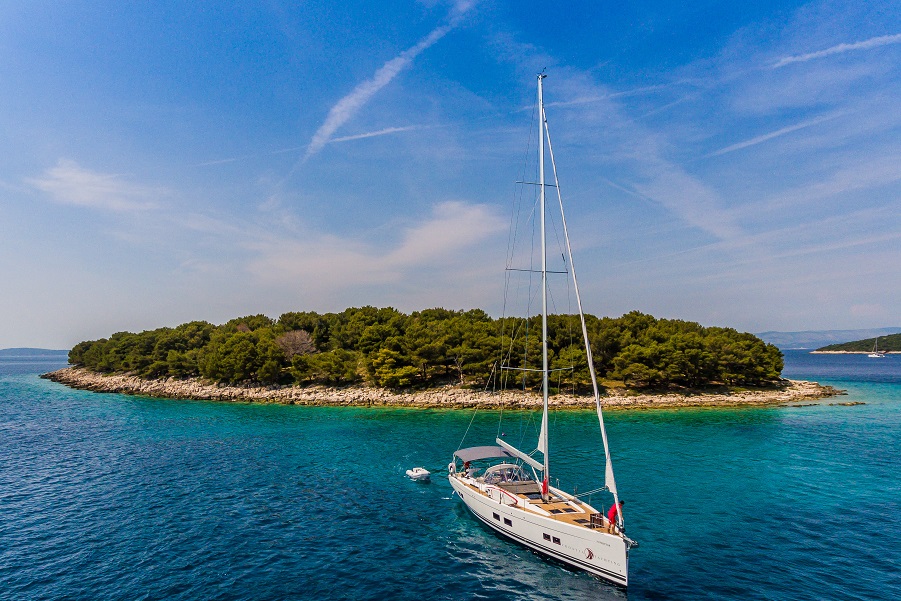Sirens, witches and cursed loves: Mythical stories every sailor must know

One of humanity’s oldest fascinations with the sea is not connected to navigation, fishing, or trade routes, but to voices supposedly coming from its depths. Across every ocean and in every culture, stories of mermaids or their variations return in different forms: as seductresses, witches, spirits, or goddesses.
Today, we imagine them as beautiful women with fish tails, half-human, half-fish. Yet they are far from Disney’s idealized figure. Their true nature is dark, fatal, and tied to the sailors’ fear that the sea hides a force capable of luring, seducing, and destroying.
For sailors, those who spend days and nights exposed to the endless waves, this imagery is not mere decoration or folklore. It arises from real experience. Because when night falls on the deck, the horizon turns into a black line, and the waves begin to sing with their own voice, it is not hard to understand why sailors’ first suspicions took the shape of stories about mermaids — stories of fear, danger, and death. Only later, in romanticized versions, do mermaids become symbols of beauty and love.

Mermaids, Harpies and intoxicating songs
In Greek mythology, mermaids did not have fish tails. Homer describes them in the Odyssey as winged creatures with claws and female faces. Their power was not in the body but in the voice: a song that lures, intoxicates, and destroys. Their hymn was deadlier than any armed force.
Later iconographies, especially in Roman and early Christian periods, gradually transformed mermaids into half-women, half-fish figures. This form extended into the Middle Ages, gaining new symbols: mirrors, combs, and flowing hair — all signs of erotic seduction.
In the Nordic world, in the cold northern coasts, stories take a different shape. There we find selkies, beings who wear seal skins and can shed them to become women. Their tales speak of loves between selkie women and fisherman men, but always with the same ending: they return to the sea, fleeing from terrestrial life. No matter how strong the love, it never lasts.
In Slavic folklore, especially in Eastern Europe, there are rusalkas — water spirits, souls of young women who died violently, often betrayed or drowned. Rusalkas dance on river and lake shores, luring men to join them. Those who enter their dance end up in the water, drowned, taken from the community.
All these myths clearly show: while humans walked the land, the sea remained a space of darkness and the unknown. And that unknown was best explained through a female figure — alluring but deadly.
Femme Fatale from the sea’s depths
For European sailors of the late Middle Ages and early modern period, the mermaid became a symbol of the fatal woman — one who seduces and destroys. The archetype of the femme fatale, long before it became a motif in 19th and 20th-century literature and film, was nurtured precisely in the cradle of sea myths.
On old sea maps from the 15th and 16th centuries—essentially itineraries of fear—dragons, sea monsters, and mermaids were drawn near shores and sea expanses. They often hold a mirror in their hand — symbolizing vanity, illusion, and deceit, but also reflection: the sea reflects the human gaze, returning a man’s own fears and desires.
For a sailor exhausted from a restless night on deck, every shadow or foam on the waves could resemble a female form. Between waking and hallucination, the figure of the mermaid was born. She was both desire and danger — a warning that beauty must not be viewed without consequences.

The dark sister of the mermaid
If mermaids were seductresses of the sea, sea witches were its sovereign rulers. Nordic mythology speaks of the goddess Rán, who holds nets in her hands, catching travelers and sooner or later dragging them into the depths. She is not a woman who seduces, but a force that swallows without sentimentality.
In Slavic imagery, rusalkas possess this dual nature: both seductresses and avengers. Rusalkas’ lovers are doomed because their power lies not in eros but in death. They are ghosts that remind us the sea and water are not only spaces of eroticism but also collective justice, revenge, and unrest.
In every one of these stories, we discover the sea as a “female force” — fickle, passionate, vengeful, and deadly. Indeed, every sailor who has faced a 40-knot storm knows: the sea does not behave like a machine or mechanical element of nature but as a living being. And when it is angry, it is as furious as an insulted lover.
Love on the brink of death
One of the most enduring motifs of sea myths is the forbidden love between a man and a sea woman. These stories often combine passion, longing, and fatality. The love can last briefly but cannot endure.
In Irish and Scottish ballads, a man falls in love with a selkie and hides her seal skin to keep her by his side. She agrees to live with him, bears children, but as soon as she finds the skin, she disappears into the sea, leaving her family behind. The melancholy of these songs points to a universal sorrow: love between two worlds always ends in loss.
In Slavic folklore, young men who follow rusalkas usually vanish. They do not become heroes but tragic figures. The romantic relationship with sea beings always means crossing the boundary between life and death.
For sailors, this is more than a fairy tale. Sailing is always a love affair with the sea — full of zeal and beauty, but also risks and losses. There is no captain who has not been tested by the sea: hoped for calm passage and then betrayed by a storm.
Mermaids and legends of the Adriatic sea
Although the Adriatic Sea is not rich in widespread mermaid myths like northern or Celtic cultures, it does not lack a void filled by local tales of sea fairies and mysterious voices from the depths.
In antiquity, Greek colonists brought their mermaids into the Mediterranean basin, so rocks near Vis, Hvar, and Korčula bear the names of Greek sirens — Partenope, Leucosia, and Ligea — connecting geography with mythical figures. These rocks, not only geographical landmarks but also symbols of the unique bond between sea and story, continue to convey an atmosphere of danger and mystery that pervades the sea to this day.
Medieval Dubrovnik chroniclers record sailors’ encounters with “songs of the sea,” known as signs of impending storms or shipwrecks. These melodies, often explained as the echo of wind in caves and underwater canyons, were also understood as warnings not to anchor where the sea “whispers.”
Local fishermen and sailors through centuries told stories of “sea fairies” and strange voices in the fog, which often preceded storms. In Dalmatia, there are numerous smaller narratives about female beings with dolphin or fish tails seen near the islands of Lastovo, Kornati, and other places, handed down among locals as guardians of the sea but also as fatal dangers.
Adriatic legends, though not as systematized or extensive as northern sea myths, bear special weight connected to local topographical and climatic realities and the feeling of nautical uncertainty. They document the maritime world as a space where the real and mythical, natural and supernatural, danger and beauty meet — a universal theme, yet always personalized by the local voice of the Adriatic.

The sea as a female force
Jungian psychology interprets mermaids as an archetype of the anima, the female dimension of the male psyche. The sea becomes a projection surface, and mermaids embody what men fear or desire in women: freedom, seductiveness, sexuality, but also power.
Anthropologists emphasize that these stories served as social codes. They warned sailors of the dangers of the sea, but also of passionate relationships with “dangerous women” that lead to social or biological death. The body of the mermaid thus merges nature and culture, underlining the fragility of the boundary between the known and unknown.
For the modern sailor, however, this symbolism transforms. Today, the mermaid is no longer a demonized figure of female sexuality but a defiant mythical heroine, a woman who does not submit to terrestrial laws. Her “dark” side attracts more than it frightens.
Dark romance today
In the era of pop culture, the mermaid has become a seductress, a romantic icon, and a feminist figure. Literature, films, and series have developed her as an archetype of a woman who is both ideal and threat. Beauty at a price, love with death — this structure fascinates even in the 21st century.
For the contemporary interpreter of the sea, this attraction also has a practical dimension. The image of a woman in the waves is the image of an infinite sea — unattainable, seductive, but also dangerously deadly. The sea remains the most dangerous lover, and the mermaid is its anthropomorphized symbol.
The sea as a dark love
Stories of mermaids, sea witches, and cursed loves are not mere folklore. They are an interpretive framework through which generations of sailors comprehended the chaotic sea.
For sailors of past centuries, these stories were warnings; for today’s, they are an invitation to introspective journeys. Because in the moment we stand alone on the deck, as twilight erases the horizon and the ocean’s surface breathes beneath us, we can discern that archetypal voice of the sea.
The sea may not hide real mermaids, but in their figure it hides our own relationship to it: passion, longing, danger, love, death. That is why mermaids remain — as ever — irresistible.
















